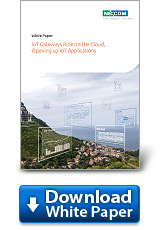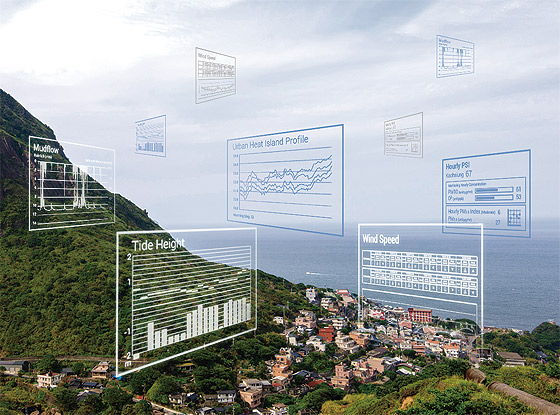IoT Gateways Ride on the Cloud, Opening up IoT Applications
 The Internet of Things (IoT), big data, and cloud open up various smart applications from smart homes, smart factories, smart cities, to homeland security and disaster prevention and management, which are all concerned with the quality of life and the safety of property.
The Internet of Things (IoT), big data, and cloud open up various smart applications from smart homes, smart factories, smart cities, to homeland security and disaster prevention and management, which are all concerned with the quality of life and the safety of property.
Abound IoT applications like preventive maintenance that helps factories boost production efficiency or environmental monitoring in rural areas for homeland security have instilled energy to verticals. "When IoT is applied from cities to remote areas in various environments, in order to generate the best values, one must customize accordingly for tight integration," said YC Cheng, Assistant VP of NEXCOM's IoT Automation Solutions Group.
Cheng takes oceanographic observation for explanation. Surrounded by sea, Taiwan's aquaculture, coastal tourism, ocean transportation, and coast guard rely on marine data including wind, tide, current, and wave information. However, these observation sites are rurally located, adding difficulties to power supplying and last-mile data transmission. Therefore, for the diversified and deep-rooted IoT development, issues of power supplying and telecom communication must be bypassed.

Green Energy Keeps Gateways Running 24/7
To tackle these issues, gateways located on IoT frontlines should be designed with energy efficiency and self-sustainability. Sunny observation areas, for instance, offer everlasting solar energy sources. Windy islands can also continuously power up gateways paired with small wind turbines for data collecting. For contingency plans, gateways can equip with storage batteries besides solar panels and wind turbines to ensure 24/7 operation under the challenging power-generating condition.
Since the air in coast areas is filled with moisture and salt, equipment deteriorates fast. Gateways can help operators better understand asset conditions with the monitoring of blade speed, battery's degeneration, temperature, and humidity. Once batteries experience voltage drop below predestined level, engineers can replace them in time and avoid system malfunction and data loss.
Wi-Fi for Wide Area Coverage
For telecommunication, wireless broadband (WB) is one of the best options. The maturity of Wi-Fi combined with mesh networking, hopping, high power radio frequency, and directional antennas build up a wide-coverage wireless network, which offer multiple channels for data transmission with high availability. Most importantly, WB avoids related issues from land ownership or development rights, simplifying the Internet coverage for coast areas.
In fact, WB has been actively applied to IoT. Besides above usage, it can be deployed in mountains to remotely monitor river levels and road conditions of slopes. Noise monitoring, particulate matter (PM2.5) index, urban heat island effect, and atmospheric information across metropolitan areas can be transmitted to cloud via WB for 24/7 monitoring.
As the wireless 802.11ac standard is commercialized, its connecting speed of 1 Gbps is similar to gigabit Ethernet connection. WB could be part of city-wide backbone infrastructure, accelerating bandwidth-hungry projects like city surveillance and free public Wi-Fi services, relieving 3G/LTE workloads.
Prepared for the IoT era, NEXCOM has centered on IoT gateways. In terms of product design, NEXCOM focuses on power efficiency, integrated sensing technologies, IoT protocols, and seamless cloud integration. NEXCOM further collaborates with partners providing clean power solutions. In addition, with industrial-grade, high-speed, and wireless hotspot technologies of IWS series, NEXCOM helps ride on the cloud and add more application values.
The collision between civilization and nature has intensified over time. In the 21st century, IoT applications help mend the gaps between economic growth and the environment for the harmonic equilibrium, keeping people live peacefully in inhabitable environments.
- Related Links:
- NIFE 106: The Little Box That Does Big Things for Industrial Automation!
- Edge Computing and Automation Simplify Path to Green Manufacturing
- Browse Other News:
- NEXCOM’s HPPC Series: High-Brightness Panel PCs Built for Industrial Reliability
- The NDiS B562: Powering Precision in Edge AI and AOI Applications
- All White Papers News
